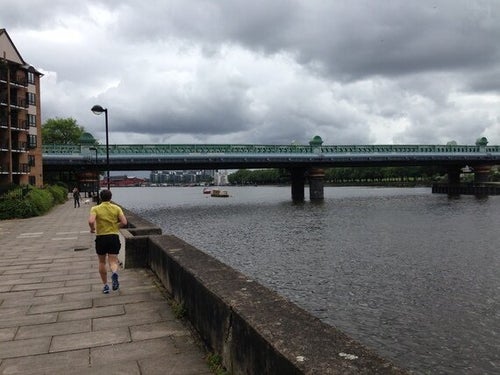It's 8pm on a Thursday night and on the ninth floor of 207 Old Street, the Jaeger bombs have just started to drop. This 'Street to Peak' fixture is one of kind, held in the clouds at one of London's newest tech spaces to exhibit several successful outdoors startups. Among the 100-strong gathering of sales reps, coders, marketeers and investors is a spirit of possibility, a general agreement that the capital is a world-class place to be building businesses in skiing, snowboarding, cycling and running - to be selling an outdoors lifestyle.


In many ways this is no surprise. When it comes to snowsports, London's appetite is already proven, acting as a cornerstone for winter brands and ski resorts from the Alps to the Rockies. This week The Telegraph Ski & Snowboard Show will be hosting over 30 resorts at Earl's Court, including renowned giants like Whistler Blackcomb and lesser-known resorts in New Hampshire.
London-based operators are even doing well at exporting a refined version of alpine culture through event-based trips to the mountains. Emerging from the wildly successful Yacht Week concept, The Ski Week caught on earlier this year among a younger, premium audience who gathered in Obertauern, Austria for six days in the snow. With an exceptional focus on après ski, networking and grand dinners, The Ski Week is now making these components available during the season in North America through events at Aspen-Snowmass, Colorado and Powder Mountain, Utah.
Out of the mountains and onto the roads and London's cycling scene is even more bustling. Take a look at any junction during rush hour and you'll notice a small peloton gather at the traffic light, often halted by a group of runners. Fuelled and serviced by bike cafes like Look Mum No Hands and Soho Bikes, London's cyclists will make over 815,000 journeys between 1km and 8km on a typical weekday*. Even when there's no reason to cycle from home to the office, cycle-specific gyms like Psycle open up to make the sport more accessible.
Meanwhile after-hours events like the session on Old Street are accompanied by events at galleries and libraries. Kings Place are putting on an evening of talks at the beginning of November dedicated to cycling and photography called Motion Blur, two weeks before the British Library opens its 'Lines in the Ice' exhibition to showcase the history of exploring the Arctic via the Northwest passage. Bear in mind the abundance of films passing by the capital this winter and you'll have no difficulty filling your evenings.
London's retail stores are cashing in on the growing interest in outdoors activities. At Mercer Street-Chamonix near Covent Garden you'll come across brands from Vancouver to California, all thanks to one of the UK's major sports retailers. Then of course Kensington High Street's front remains strong and the cycling shops that occupy Spitalfields continue to turn good business.
Perhaps this all makes sense, that London should be a focal point for sports that grew up in the mountains, or on saddles in Italy. In road cycling, Team Sky repeatedly performs at the top of the sport while Britain did unusually well in the Winter Olympics and of course the Brownlee brothers continue to outrun the best in triathlon. Britain is a small island - small enough that people like Sean Conway choose to swim the length of it - but its capital certainly punches.
Though the uptake in outdoors sports is still relatively low in number, recent growth in running and cycling presents a challenge and an opportunity for policy makers. A sharp increase in road fatalities over the past three years is a telling statistic (14 in London during 2013). Also revealing is the failure of either party to compromise, with cyclists, runners and motorists each battling over their own strip of tarmac.
In September, Boris Johnson announced his £900 million cycle highway plan, including an 18-mile stretch from Barking to Acton. The so-called 'Crossrail for bikes' will be complemented by a 3-mile route from Elephant & Castle to King's Cross, and improved intersections at Tower Hill, Blackfriars and Parliament Square. Top on the agenda for this series of Cycle Superhighway is a focus on segregated lanes with a barrier to separate motorists and cyclists.
The Major's contribution to the wellness infrastructure of London is significant, most notably through the Barclays Cycle Hire Scheme. As that project's key sponsor moves off, and a new mayor lines up for election in 2016, the capital has a small window to ensure that momentum continues to grow on two wheels instead of four.
*See page 23 of Transport for London's Cycling Revolution London.